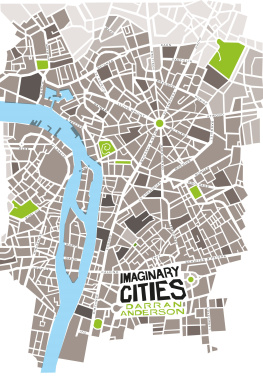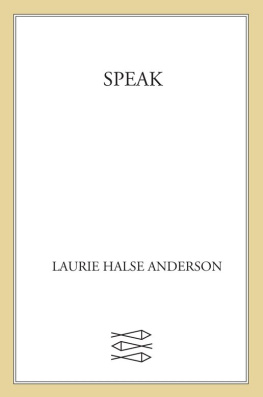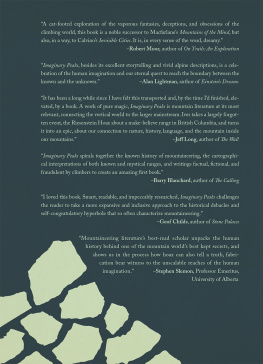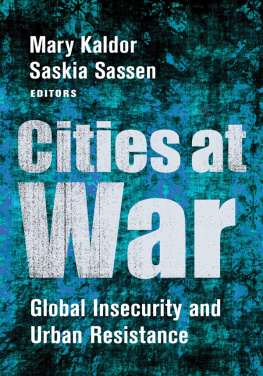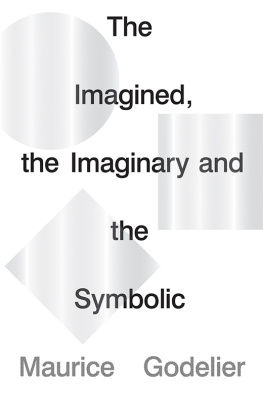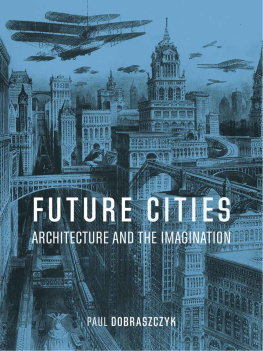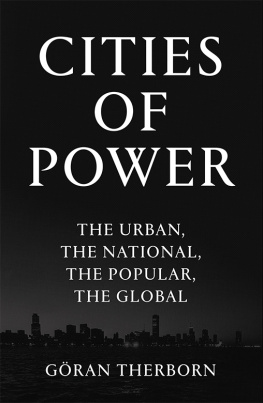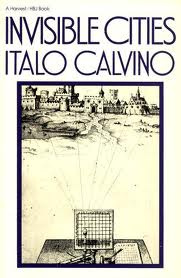Contents
The Men of a Million Lies, or How We Imagine the World
Platos Cinema
Before there were films, there was cinema; the flickering shadow play of fire and motion on limestone cave walls. We might assume the paintings the more bohemian troglodytes smudged with charcoal and ochre were simply representational, charting exaggerated auroch kills. What then of the oldest symbol archaeologists have found? A simple red disc carbon-dated to 40, 800 years ago, in the depths of Cueva de El Castillo, Cantabria. Was it the infernal crucible of our sun? It was logical for the life-giving ball of magnetic fields and plasma to be worshipped, before mankinds act of folly and vanity in creating gods in its simian image. In the thousands of years to follow, the descendants of the cave-artists would depict on stone, clay, bone, bamboo, wood, papyrus, wax, fabric, slate, paper and pixels, everything that existed beneath that sun; what is and, most crucially for our purposes here, what might be.
Consider, however, that red disc as something else entirely. We view the existence of everything bound by relativity. There is no escape from context. The eye, and its position, is the fulcrum on which the entire visible universe pivots. When the artist ventured into the caverns to leave a circular mark on eternity, he or she may well have been painting the singularity that is the pupil of a human eye. Interpretation is everything. Perhaps in the half-light, the artists, as much pattern-seeking mammals as we are, painted not simply what theyd seen but what theyd hallucinated or dreamt, in some kind of desperate prophecy or ceremonial magic. Humanity has always looked for the dubious reassurance of auguries and, through wishful thinking and pareidolia, has continually found threats of danger and promises of treasure. Might we have envisaged then what was to come? A floating city on a shimmering horizon. Minarets in frost. A Neolithic painter dreaming of skyscrapers.
Darkness is misconceived as nothingness; rather it is a state of intrinsic light, within which a great deal of visual information may be discerned; a catalyst for the unintentional creative process known as prisoners cinema It can walk through walls or be imprisoned by the sky.
Hallucinations, Oliver Sacks, Pg. 33-34
From Italo Calvinos Invisible Citie s, a book by a literary master to which this book is a diminished non-fiction mirror.
Paradise Lost , lines 254-255
The Deceptions of Memory
In 1296, the middle-aged Marco Polo found himself inconveniently in prison. He had been captured in the Eastern Mediterranean at the helm of a Venetian galley by rival sailors from the Most Serene Republic of Genoa. Given that the two republics were locked in the War of Saint Sabas, this was inopportune, especially given he had a siege catapult onboard. Polos fortunes improved however when he discovered his cellmate was a writer, Rustichello of Pisa, who was an enthusiastic listener to Polos tall-tales of voyages in the mysterious Orient. This was good luck as it made Polos fame. It was bad luck for the very same reason.
Initially written as a guide for budding merchants, the asides and tangents that made up the quartet of books Description of the World were fascinating yet scarcely believable. They quickly became immensely popular yet they earned Polo the cruel nickname Il Millione (the man of a million lies). It was doubted by some that hed even travelled at all except around his own vast imagination.
The accounts did however contain many genuine discoveries alongside exaggerations, half-truths and myths (How the Prayer of the One-Eyed Cobbler Caused the Mountain to Move.
Polos travelogue notes many curious cities on his winding road (Baudas, Samarcan, Caracoron) culminating in the opulent palaces of the Chinese Mongol Emperor Kublai Khan, at whose court he was guest for seventeen years. The explorers recollections range from the mercantile (lists of industries and natural resources) to the fanciful; cities where the inhabitants are perpetually drunk, where men eat birds and ride around on stags, where marriages are arranged between ghosts, and the lord in his marble palace drinks wine from levitating goblets. Often Polo would add boasts, no one could imagine finer recurs, and even suggest he was holding back for fear of arousing incredulity in the readers (I will relate none of this in this book of ours; people would be amazed if they heard it, but it would serve no good purpose) which only served to further his ridicule. Beyond their narrow confines, the world was more extraordinary than his sceptics could imagine. Raised in the seemingly-impossible floating city of Venice, a maze of canals and alleys built on stilts in a lagoon, Marco Polo had no such limitations. Imaginary cities posed no threat to a man who was born in one.
When a book leaves the protective custody of its creator, it is rightly at the mercy of its readers but also, if prominent enough, at the hands of those who have not read it. In the age before the printing press, Polos tales spread largely through word of mouth, with cumulative error compounded by jealousies and speculations. The stories, already partially there, metamorphosed further into myth. To accuse Polo of inventing fictions is to assume that perception and memory are not partially fictional to begin with. I will have spent my life trying to understand the function of remembering, the narrator in Chris Markers Sans Soleil acknowledges, which is not the opposite of forgetting, but rather its lining. We do not remember. We rewrite memory much as history is rewritten. Fragments of the real are retained, though they evolve with time to fit the wisdom or fallacy of hindsight and are juxtaposed with memories of dreams and thoughts and memories of memories. We are unreliable narrators even to ourselves.
Nostalgia is not what it used to be. In Terence Davies The Long Day Closes , the director remembers a blissful, family tableau at Christmas, where an old streetlamp and snow appear within the living room. It did not strictly happen and yet there is no lie involved. By its ethereal light, things we think we know appear to change.
All great imaginary cities merge the matter-of-fact with the surreal. They are adrift in the skies but are, at least momentarily, anchored
It appears as an engraving on an arch leading to the Land of Illusion, but the traffic is not one-way. The state of ambiguity between real and unreal is still one we broach with a degree of hostility. Yet the border is a disputed one. Consider the way cities brand themselves; how the fictions of Meyrink, Kafka and Haek were moulded by the versions of Prague they lived in and how that same city is now moulded by their fiction. Consider how, upon visiting, the mind turns to murderers haunting bridges and any number of such tales.
On Bloomsday, Dublin celebrates its fictional recreation in a text dedicated to the day and the city in which Joyce had first courted his wife. City begets text begets city. Despite writing in continental exile for years, Joyce claimed I want to give a picture of Dublin so complete that if the city one day suddenly disappeared from the earth it could be reconstructed out of my book.
Perhaps it could be but it would be as much Joyce as Dublin. Joyces father once remarked of his son, If that fellow was dropped in the middle of the Sahara, hed sit, be-God, and make a map of it.; an intriguing idea but one disproved by the fact that all cities can, and should, be read.
It would be foolish to deny the value of lying. Marco Polo was always destined to be accused because its what the audience was prepared for. When faced with the blank space on the map, we turn to the fantastical. Consider not simply the sea serpents and here be dragons on archaic maps but the casts of extraterrestrials with which we have populated distant planets in our age of reason. The creator of arguably the earliest surviving science fiction text ( True History ), Lucian of Samosata justified the honesty of dishonesty, a quality he shared with Polo (with a nod to Epimenides
Next page
